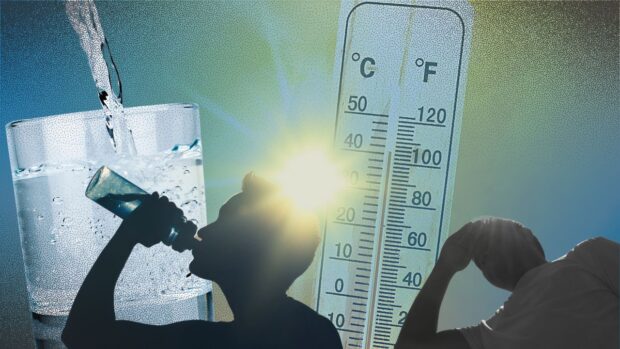
Dagupan City in Pangasinan, as well as Aborlan in Palawan and Catarman in Northern Samar, will have a heat index of 44ºC on April 20, 2024, according to the Philippine Atmospheric, Geophysical and Astronomical Services Administration (Pagasa). INQUIRER.net stock images
MANILA, Philippines — Three areas of the country will experience a sweltering 44-degree Celsius heat index on Saturday, according to the Philippine Atmospheric, Geophysical and Astronomical Services Administration (Pagasa).
The “danger category” heat index was forecast in Dagupan City, Pangasinan; Aborlan, Palawan; and Catarman, Northern Samar.
Heat indices from 42 to 51 degrees Celsius fall under the danger category based on Pagasa’s heat index classification system.
READ: Pagasa: Ridge of HPA affects Metro Manila, eastern part of Luzon
Other areas seen to feel dangerous levels of heat on April 20 are:
- Central Bicol State University of Agriculture in Pili, Camarines Sur – 43 degrees Celsius
- Roxas City, Capiz – 43 degrees Celsius
- Dumangas, Iloilo – 43 degrees Celsius
- Guiuan, Eastern Samar – 43 degrees Celsius
- Zamboanga City, Zamboanga del Sur – 43 degrees Celsius
- Cotabato City, Maguindanao – 43 degrees Celsius
- Bacnotan, La Union – 42 degrees Celsius
- Aparri, Cagayan – 42 degrees Celsius
- Tuguegarao City, Cagayan – 42 degrees Celsius
- Iba, Zambales – 42 degrees Celsius
- Barangay Ambulong in Tanauan, Batangas – 42 degrees Celsius
- Coron, Palawan – 42 degrees Celsius
- Puerto Princesa City, Palawan – 42 degrees Celsius
- Virac (Synop), Catanduanes – 42 degrees Celsius
- Iloilo City, Iloilo – 42 degrees Celsius
- Davao City, Davao del Sur – 42 degrees Celsius
According to Pagasa, a danger category heat index could cause cramps, exhaustion, and even heat stroke with prolonged exposure.
READ: DA: Agriculture losses due to El Niño impact now P3.9 billion
The state meteorologist defines heat index as “a measure of the contribution that high humidity makes with abnormally high temperatures in reducing the body’s ability to cool itself.”
To prevent the effects of searing weather, Pagasa said the public must limit time spent outdoors; drink plenty of water; avoid tea, coffee, soda, and liquor; use umbrellas, wear hats, and wear sleeved clothing outdoors; and schedule heavy-duty activities on the cooler periods of the day.
It also said that symptoms of heat-related illnesses include heavy sweating, exhaustion or fatigue, dizziness or lightheadedness, blacking out or feeling dizzy when standing, a weak but fast pulse, nausea, and vomiting.
In cases of emergency, Pagasa advised the public to do the following:
- Move the person to a shady spot and lie him or her down with legs elevated
- If conscious, have them sip cool water
- Remove clothing, apply cool water to the skin and provide ventilation
- Apply ice packs to the armpits, wrists, ankles, and groin
- Bring to a hospital immediately